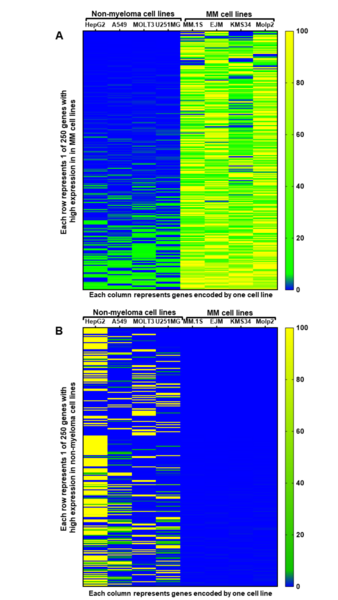Identification of potential therapeutic targets for multiple myeloma by gene expression analysis
(1) Sidwell Friends School
https://doi.org/10.59720/23-146
New treatments are needed for multiple myeloma (MM), an almost always incurable cancer of plasma cells. Cancer therapies might have fewer side effects if they are aimed at specific protein targets expressed by cancer cells. We hypothesized that differences in gene expression between multiple myeloma cells and normal cells could be used to identify new targets for MM therapies. RNA sequencing (RNAseq) is a technique for quantifying gene expression in cells. We analyzed RNAseq data from the Cancer Cell Line Encyclopedia to identify genes with high expression in MM cell lines versus cell lines derived from cancers other than MM. Next, the 200 genes with the highest expression in MM cell lines versus other cell lines were evaluated for RNA expression in primary MM samples from patients. Of these genes, 72 were expressed in at least 23 of 25 primary samples from patients. We evaluated the 72 genes expressed at high levels in MM cell lines and expressed in primary MM cells for expression in normal human tissues. We evaluated gene expression in normal human tissues by using publicly available RNAseq data. Genes with high expression in normal tissues were eliminated as potential targets to decrease the chance of side effects caused by therapies targeting proteins expressed by normal tissues. We identified 19 genes with high expression in MM and low expression in normal tissues. The proteins encoded by these genes are promising therapeutic targets for MM and include Prepronociceptin (PNOC) and Interferon Regulatory Factor 4 (IRF4).
This article has been tagged with: